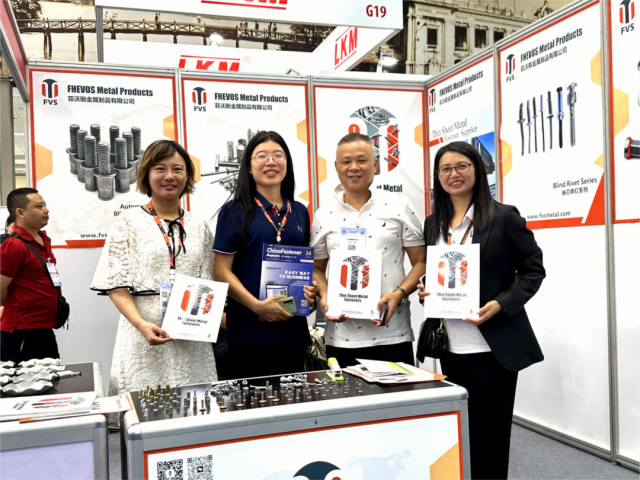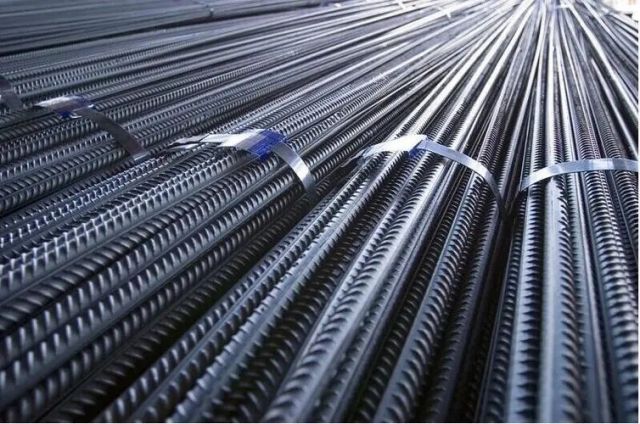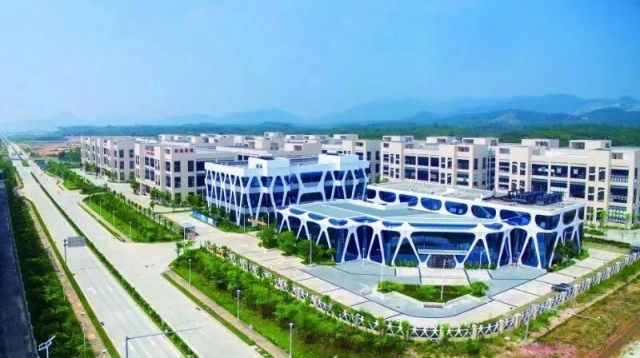1. Exhibition
In 2023, major exhibitions in the fastener industry will gradually regain vitality:
In March, after four years, global fastener companies once again focused on the Stuttgart exhibition in Germany;
In June, the return of the Shanghai Fastener Professional Exhibition sparked an industry boom;
In October, at the Las Vegas exhibition in the United States, Chinese fastener companies discussed the future with their overseas counterparts
Both domestically and internationally, exhibitions of all sizes have left countless busy figures behind. On March 20th next year, we will gather with everyone at the 14th Shanghai Fastener Professional Exhibition to continue contributing to the recovery of the industry.
2. Listing
Many fastener companies are embarking on the path of going public in 2023, obtaining more financing opportunities and development space through the capital market. On June 15th, wind power fastener leader Feiwo Technology went public; On December 28th, Tengda Technology officially launched its IPO.
Listing not only provides new financing channels for fastener enterprises, but also enhances their visibility and brand value, making it easier to attract industry talents and injecting new impetus into their future development.
3. Export
This year, Chinese fastener companies have taken a new step towards going global. Fastener companies from Haiyan, Jiashan, Yongnian and other regions have organized groups to go abroad to grab orders, and official and private overseas inspection teams have also set off one after another. The government, associations, and industry platforms are all making every effort to assist fastener enterprises in exporting.
4. Low carbon
In the context of global climate change, low-carbon production has become an inevitable trend in the fastener industry. On April 25th, the European Council voted to pass the “carbon tariff”; On October 1st, the world’s first “carbon tariff” began to be implemented; On December 20th, the China Chamber of Commerce for Import and Export of Mechanical and Electrical Products held a special training on green development in trade, enhancing the awareness of green and low-carbon development of foreign trade enterprises and enhancing their ability to respond to EU carbon tariffs.
Studying new technologies for energy conservation, emission reduction, and environmental protection, reducing energy consumption and pollution emissions, promoting low-carbon economic development in the entire industry, vigorously promoting new green environmental protection processes, and actively promoting the application of new materials are becoming the direction of green upgrading and transformation development for enterprises.
5. Localization
Rocket Academy has developed a new generation of high-strength aluminum alloy fasteners for aerospace; The qualification testing of the first batch of domestically produced fasteners for AG600 has been successfully launched. In the fields of high-end fasteners such as aerospace, high-speed rail, and automobiles, Chinese companies are gradually going further and further.
6. Technological improvement
Most enterprises in the Chinese fastener industry are characterized by small scale, low automation level, and low technological processes. Technological advancement is one of the key factors in the upgrading and transformation of China’s fastener industry. On June 4th, the second anti loosening performance invitation competition was held in Haiyan; On September 1st, the first fastener and thread technology exchange conference was successfully held at Yanqi Lake in Beijing.
7. Industrial transfer
With the continuous strengthening of domestic environmental protection policies and the increase in production costs, some coastal fastener enterprises have begun to transfer their production bases to regions such as the central and western regions or Southeast Asia. Many Dongguan fastener enterprises have settled in Yangjiang; Many domestic enterprises have also established factories in Vietnam and Thailand.
Industrial transfer can not only reduce production costs, but also explore new markets and resources. However, enterprises also need to face new challenges and risks during the transfer process, such as cultural differences and talent shortages. Therefore, fastener companies need to conduct sufficient research and planning to ensure the successful implementation of the transfer.
8. Anti dumping
In the context of intensified international trade frictions, the fastener industry has also been affected by anti-dumping measures. On July 12th, the United States launched an anti circumvention investigation into Chinese screws; On September 23rd, India launched an anti-dumping investigation against Chinese fasteners; On November 30th, Canada launched a double reverse investigation into Chinese carbon steel fasteners; On December 22nd, the Mexican Ministry of Economy issued a statement stating that it has made a preliminary affirmative anti-dumping ruling on steel screws originating from China, regardless of their import sources. The preliminary ruling is to impose a temporary anti-dumping duty of 8.02% to 48.08% on the products involved.
After the EU imposed anti-dumping duties on Chinese fasteners, the importance of Chinese fasteners in emerging market countries has further increased. India and Mexico are both the top ten export markets for Chinese fasteners. In 2022, China’s total exports to these two countries exceeded 700 million US dollars. How to explore new markets is a problem that the industry must face.
9. Price increase
Starting from September this year, steel prices have experienced a strong rise, and as of December 20th, the national average price of carbon bonded steel is 4310.00 yuan/ton. The increase in raw material prices has brought greater cost pressure to fastener enterprises, which is like adding insult to injury in the context of a sluggish market.
10. Domestic demand
From January to October this year, the total export value of Chinese fasteners was 7.68 billion US dollars, a year-on-year decrease of 14.7%. Against the backdrop of weak exports, more and more tight enterprises are turning their attention to the domestic market. The market competition is becoming increasingly fierce, and many enterprises are competing for market share through price wars, leading to a continuous compression of profit margins. In order to avoid falling into the vortex of price war, brand building has become the top priority for enterprises.
Post time: Jan-03-2024



